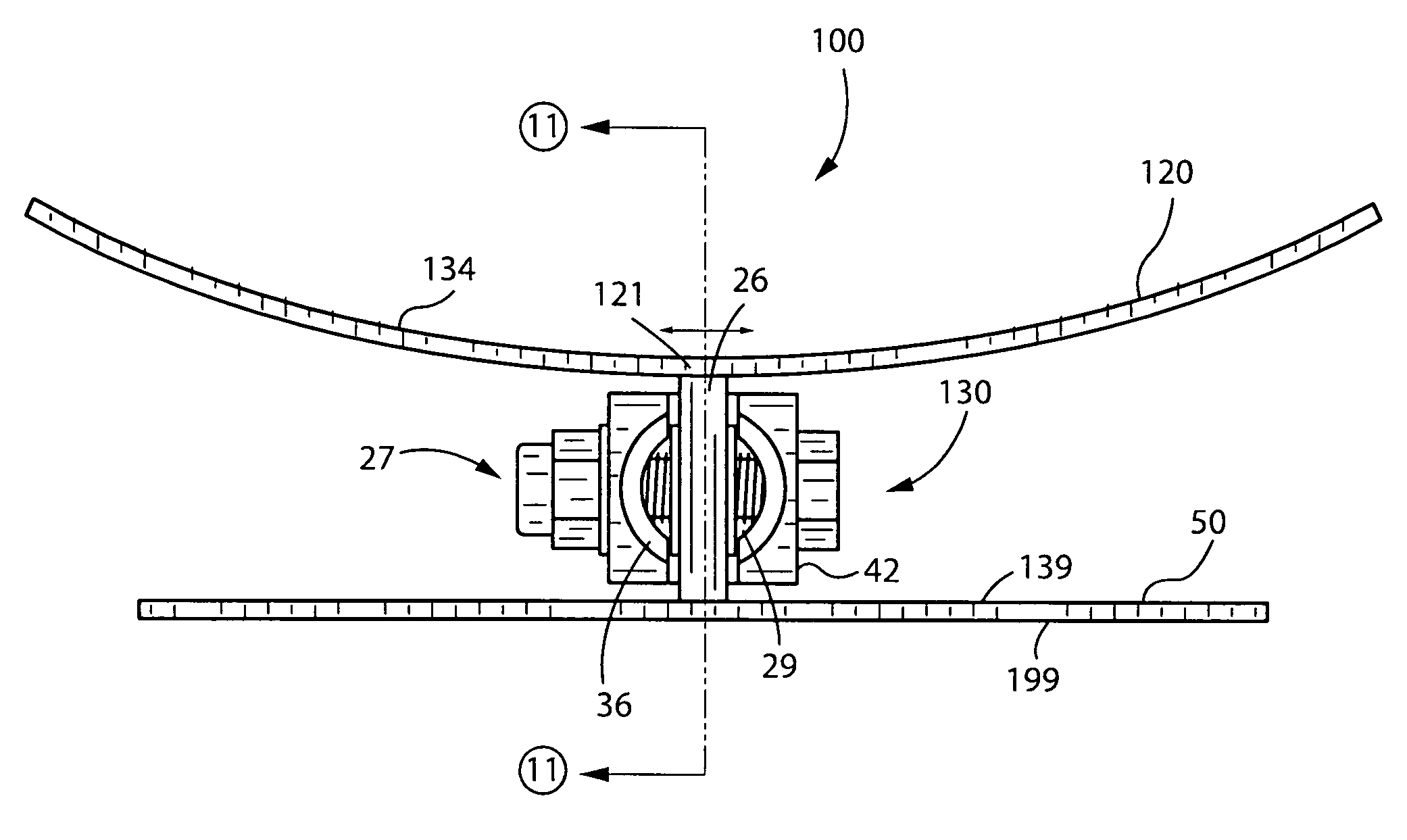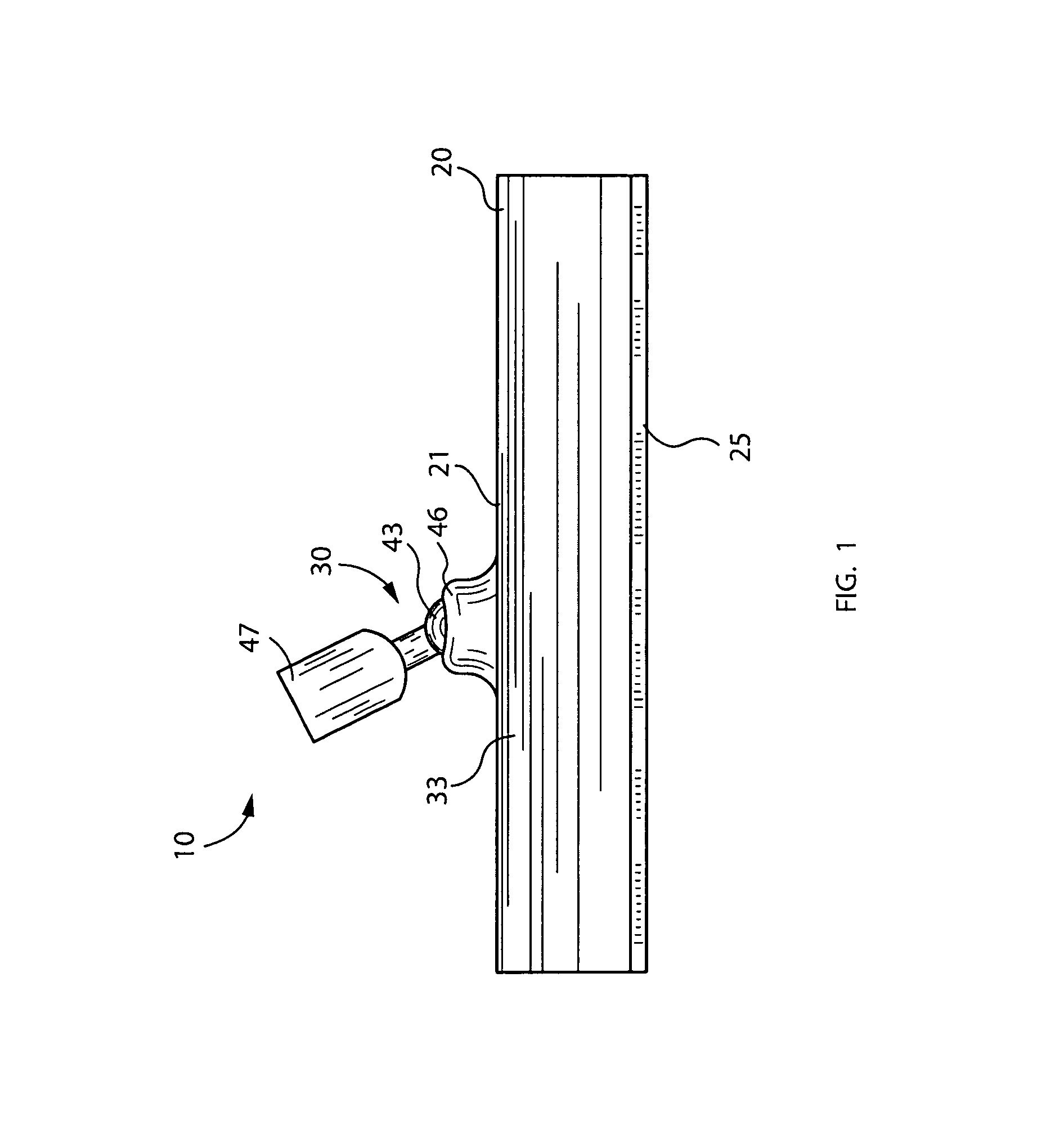Cleaning tool for removing undesirable marine growth from a support surface and associated method
a technology for supporting surfaces and cleaning tools, which is applied in the field of hand-held cleaning tools, can solve the problems of constant maintenance of marine growth, accumulation of sediment and scum on the walls of swimming pools and other underwater surfaces, and the removal of marine growth from the surface of boat hulls is a problem, so as to reduce the possibility of undesirable forces, and reduce the likelihood of premature shifting
- Summary
- Abstract
- Description
- Claims
- Application Information
AI Technical Summary
Benefits of technology
Problems solved by technology
Method used
Image
Examples
Embodiment Construction
[0056]The present invention will now be described more fully hereinafter with reference to the accompanying drawings, in which a preferred embodiment of the invention is shown. This invention may, however, be embodied in many different forms and should not be construed as limited to the embodiment set forth herein. Rather, this embodiment is provided so that this application will be thorough and complete, and will fully convey the true scope of the invention to those skilled in the art. Like numbers refer to like elements throughout the figures.
[0057]The apparatus of this invention is referred to generally in FIGS. 1-11 by reference numerals 10 and 100 and is intended to provide a scraping tool for removing existing marine growth from hard-to-reach target zones, such as dock pilings and boat hulls, for example. Exemplary marine growth may include barnacles, for example. It is noted that reference numerals 10 and 100 designated alternate embodiments of the present invention.
[0058]It ...
PUM
 Login to View More
Login to View More Abstract
Description
Claims
Application Information
 Login to View More
Login to View More - R&D
- Intellectual Property
- Life Sciences
- Materials
- Tech Scout
- Unparalleled Data Quality
- Higher Quality Content
- 60% Fewer Hallucinations
Browse by: Latest US Patents, China's latest patents, Technical Efficacy Thesaurus, Application Domain, Technology Topic, Popular Technical Reports.
© 2025 PatSnap. All rights reserved.Legal|Privacy policy|Modern Slavery Act Transparency Statement|Sitemap|About US| Contact US: help@patsnap.com



